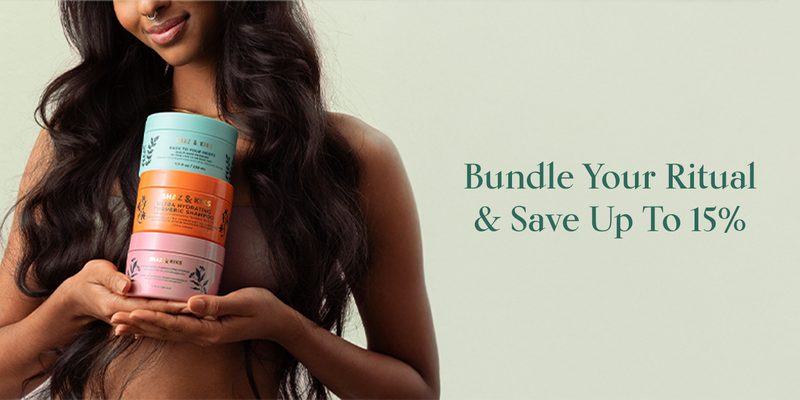Here’s a fun fact: your hair can swell up to 33% of its weight when it gets wet. There’s more… damaged and very porous hair can absorb in excess of 50% of its weight in water! That’s because all hair, some more than others, is porous (like your skin) so it can pretty much absorb whatever gets put on it. Unlike your skin, your hair strands have a lot less volume so absorbing that much liquid is one of the main causes of damage to hair, leading it to become weak, brittle, and break.
There is a range of ‘type’ of water, some are more harmful than others:
Hard water — minerals like calcium, magnesium, and iron dissolved in hard water deposit onto the surface of your hair and after many washes can create a very unpleasant scaly build up. This accumulated layer of hard debris can cause your hair to be dry and unruly, tangle easily, appear dull and lifeless, and lead to breakage.
Chlorine and ocean water — both types of water components in it that suck out the moisture from your hair, drastically leading to dehydrated hair. It also leads to a gradual erosion of the fatty acid layer in the cuticle. All this can lead to tangling, breakage, loss of surface sheen, and loss of body.
So there are waters that are worse than others BUT all water can be damaging to hair. Even if you’re bathing under a natural spring in the Himalayas, those H2O molecules are able to penetrate your hair strands, swell up your cortex (inner layer of your hair), raising your cuticles, which makes your hair weak and susceptible to breakage.

This why is it’s definitely not the first time you’ll hear it and it won’t be the last…
"Wet hair is the weakest hair"
Best ways to help prevent and treat water damage
Use a prewash
Massaging your scalp and coating your DRY strands before you get it wet (shower, bath, pool, beach) with a mix of plant-based oils is hands down the best way to protect your hair from water damage. The right types of oils are able to penetrate your hair shaft and create a protective shield around it, preventing a flood of water to enter and damage it. The winner that has many scientific studies proving its ability to successfully penetrate the hair is coconut oil. But other oils like olive, moringa, amla, argan, sweet almond, sesame seed all great options as well.
Detangle your hair before you get it wet
Make sure you’re gently using a comb or a brush to detangle your hair before you jump in the shower or that pool. Going into the water with tangles is a bad idea because the water will dry up your hair leading to more tangles, and then the worst thing you can do is brush it out when it’s wet.
Use low pH products
This is something we consistently talk about at SHAZ & KIKS: the importance of your products’ pH levels. Our hair has a pH level between 4.5 and 5.5 which is slightly acidic. Anything between 7.1 – 14 is alkaline, and anything between 0-6.9 is acidic. In order to maintain your hair’s pH balance, you need to avoid products that are alkaline. If this happens the cuticle layers of the hair open excessively which will increase water absorption and hair expansion.
Products with a low ph, or acidic products, will help close layers of the hair and, therefore, will reduce water intake. Natural ingredients that help can lower pH levels are aloe vera and apple cider vinegar and are great to rinse your hair out with after you wash it.
Squeeze out excess water and use a microfiber towel
A no-brainer is to squeeze out the excess water from your hair once you shut off the shower or come out of the pool. The longer your hair sits in a lot of water, the more damage that can happen. Once you squeeze out (gently) as much water as possible, it’s crucial to use a microfiber towel. Microfiber towels cause a lot less friction when you’re drying your hair vs. cotton towels. Friction leads to frizz and hair breakage. Using a microfiber towel makes sure your hair cuticles stay flat and healthy.
Air dry
Making use of drying tools to quickly dry your hair may sound like a good idea, but it can actually cause more damage. When your hair is wet and drastically dries it contracts too quickly and loses much of its moisture, which can cause breakage. To avoid this, the best option is to air dry. However, if you want to accelerate this process always use your drying tools on a low setting and slowly dry your hair.
Photo by Valentin Lacoste on Unsplash










